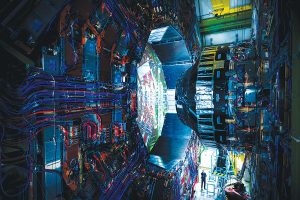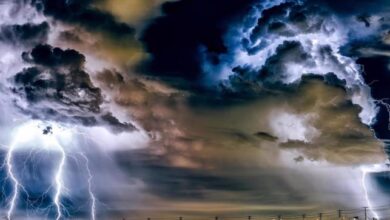CERN gets closer to detecting unknown particles from the ‘hidden universe’

 Although the Standard Model of particle physics does a great job of explaining the universe, there are still many mysteries that need to be solved. Physicists believe that there are many more elementary particles that are hidden from us.
Although the Standard Model of particle physics does a great job of explaining the universe, there are still many mysteries that need to be solved. Physicists believe that there are many more elementary particles that are hidden from us.
With the help of a new CERN project called “Search for Hidden Particles,” physicists plan to discover the hidden elements of the Universe using a beam of protons, a metal block and extremely sensitive sensors, reports Popular Mechanics.
When 12 years ago, scientists from CERN discovered the Higgs boson, which had previously been considered a theoretical particle, the Standard Model of particle physics seemed to be complete.
But then it turned out that this was not so. Physicists have observed phenomena that do not fit into the Standard Model. This applies to dark matter, neutrinos and antimatter.
Physicists still cannot detect dark matter particles or itself directly. It is also not clear why neutrinos have mass. It is also unclear why there is less antimatter in the Universe than ordinary matter.
To answer these questions, we need to delve deeper into the world of particle physics, and that’s where the Search for Hidden Particles project comes in, with the goal of finding the hidden secrets of particle physics. CERN has officially given the go-ahead to this project.
The project should begin in 2027, and the first results should be obtained in 2030. Physicists will look for weakly interacting particles such as dark photons, axions, heavy neutral leptons and many others that are hidden from scientists but hypothetically should exist.
The discovery of these particles is of great importance, because the Standard Model of particle physics can only describe 5% of the matter in the Universe. That is, 95% of the Universe is hidden from us.
During the experiment, physicists will fire beams of protons at almost the speed of light, collide them, and then study the results. Proton beams will be launched at the Proton Super Synchrotron particle accelerator.
Once the beam of protons reaches a fixed target, that is, the so-called large metal block, the resulting collision will produce a variety of particles, including charming mesons and also photons.
While existing CERN experiments focus on the energy frontier, where relatively heavy particles collide and break up into possibly unknown particles, this project explores the “intensity frontier,” which uses precise measurements to analyze quantum effects. Scientists believe that with the help of this project it will be possible to discover the missing physics.




